The French asparagus season has now come to an end. Christian Befve, internationally renowned asparagus expert, founder and manager of the consulting company Befve &Co, takes a look back at the highlights of the season and the solutions to be implemented for better productivity.
“Overall, this year was average to mediocre in the north of France and average to good in the south, with better prices. The end of the winter and beginning of spring were very humid, which delayed the preparation work and impacted the asparagus quality since the mounds were then slow to warm up.”
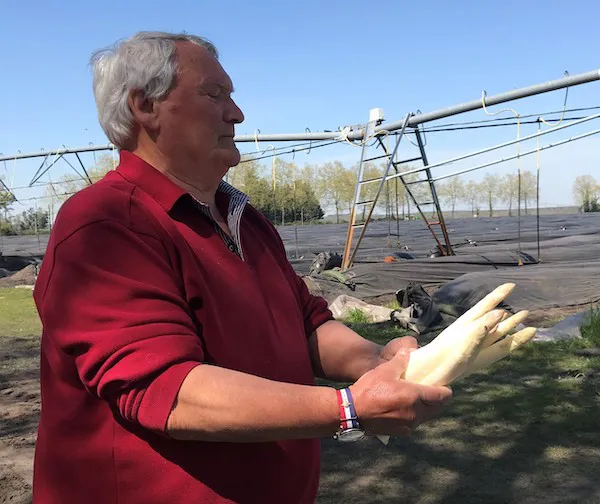 Christian Befve
Christian Befve
Normal volumes in the south of France
In the south of France, the season was quite satisfactory this year. “It started normally until Easter. Then, the cold spell slowed down the production. The volumes were normal, sometimes down to -10%. And overall, prices were good, higher than last year with 0.50/1€ [0.60/1.2 USD] more per kg. This explains why the south of France experienced a good season.”
20 to 40% loss in volumes in central and northern France
Because of their climate and latitude, the central and northern areas of France suffered more from the cold, so the season was more complicated. “Producers did not get asparagus until Easter, which is a pivotal period when the asparagus are sold at higher prices thanks to the consumption peak around that time. The asparagus arrived after this date and the cold and humidity (2 to 3°C less than usual) in April/May severely impacted the production. This resulted in volume losses of 20 to 40%. This is considerable.” Prices were (very) good but not enough to compensate for the loss in yield.
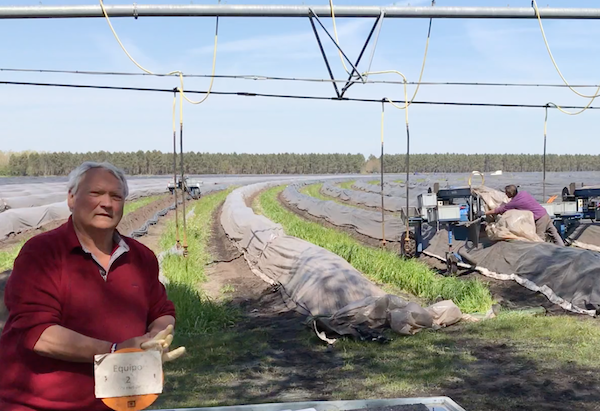
A good year for the French organic production
The year has been very good for organic products in general. “Organic asparagus sell for 30 to 40% more than conventional asparagus. This is very good for the asparagus because organic production has higher costs. It is therefore very advantageous for producers when the volumes offered do not exceed the demand. We also observe that consumers are buying more and more locally and becoming increasingly attentive to production methods. The sanitary crisis has also brought consumers closer to producers, with a strong growth in direct sales. This is much more rewarding for asparagus growers. People are becoming more interested, as shown by the significant increase in visits to my website this year.”
A good season for the green asparagus
Overall, green asparagus producers have also had a relatively good season this year. “We observe an increase in the consumption of green asparagus, especially among younger people. Green asparagus sell for about 30% more than white asparagus. This is due to the higher production costs from the daily harvesting. Moreover, a green asparagus weighs about 20% less than a white one.”
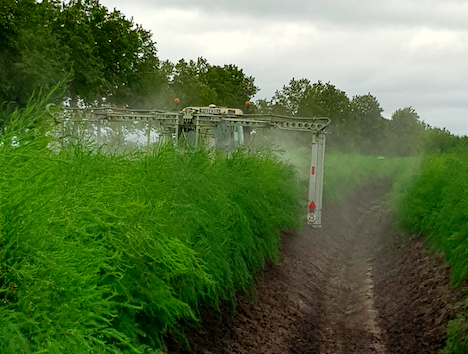
Asparagus crops are very sensitive to temperature variations
This year, the bad weather conditions have affected all of Europe. Therefore, there was no marked imbalance in production between the countries. In all regions, the asparagus production was indeed impacted significantly for each degree lost. “Depending on the varieties, the plant will wake up at different degrees: 11°C for the early varieties, 12°C for the mid-season varieties and 13°C for the late varieties. It is important to note that 1°C more can generate an additional 20kg/ha/day of asparagus. In Alsace, temperatures were 2°C lower than normal so they lost 40 kg/ha/day, multiplied by 60 days of harvest, which makes about 2.4 tons less for the entire season. This lower production also led to an increase in labor costs of 10 to 20% since the workers still need to come but the quantity harvested is lower.”
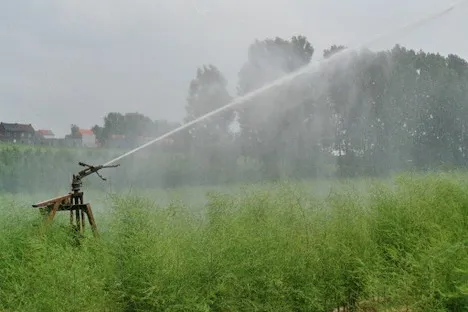
The different tools used to fight the cold
Faced with these temperature-related losses in yield, Christian Befve and his team work hard to anticipate climate change and maintain a good yield level for asparagus producers. “We have various techniques to slow down these changes. There is of course the choice of the varieties. The early asparagus come out at lower temperatures, so I encourage producers to plant those varieties. Then, we can also use thermal plastic mulches to warm up the soil. Thermal plastic can bring an additional 2°C to the soil. With 2 plastic mulches, we can increase the temperature by 3°C. And with hoops, we can gain another 1 to 2°C. This helps eliminate all the weather jolts that will unfortunately become more and more frequent. Other techniques such as the use of shelters and even greenhouses with photovoltaic panels are also being used more and more frequently.”
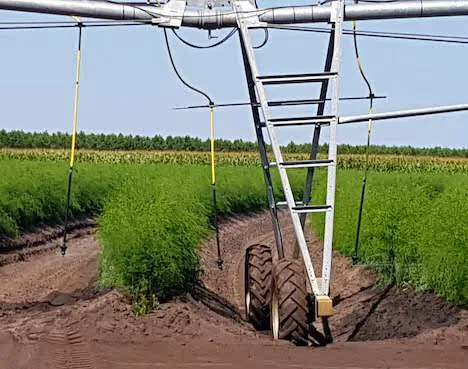
“It is up to us farmers to adapt to the bad weather. Let us become as independent as possible from weather hazards.”
For more information:
Christian Befve
Christian Befve & Co
christian@befve.com
www.befve.com
